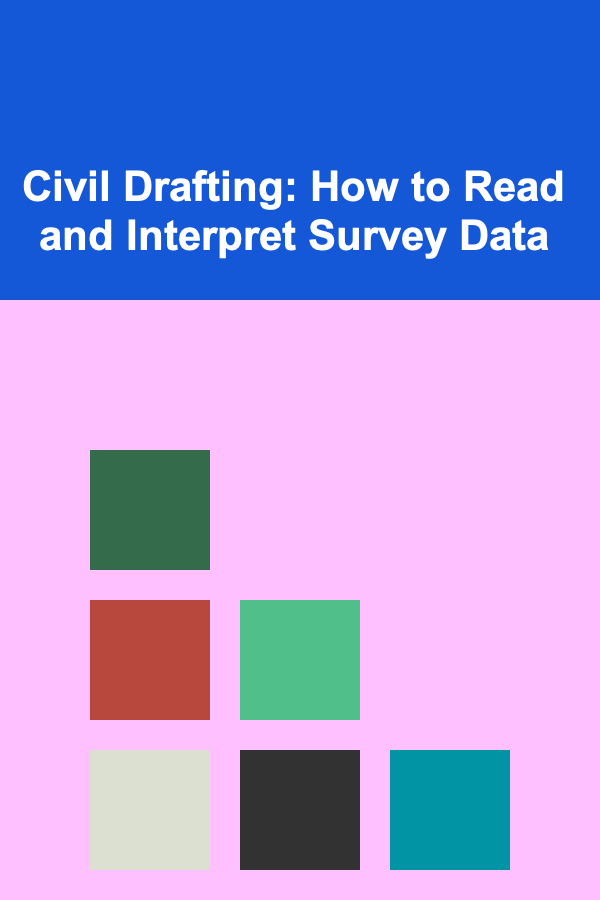
How To Grasp the Concept of Quantum Readout
ebook include PDF & Audio bundle (Micro Guide)
$12.99$8.99
Limited Time Offer! Order within the next:

The field of quantum mechanics is filled with concepts that challenge our classical understanding of the world. One of the most intriguing and complex aspects of quantum mechanics is quantum readout. Quantum readout refers to the process of extracting information from a quantum system, and it plays a crucial role in quantum computing, quantum communication, and quantum measurement. Understanding this concept requires a deep dive into quantum theory, the measurement problem, and the tools used to perform quantum readouts.
In this article, we will explore the concept of quantum readout from various angles: its theoretical foundation, practical implementation, and its implications for emerging technologies. By the end, we hope to provide a clear and comprehensive understanding of this important quantum phenomenon.
The Quantum Measurement Problem
Before delving into quantum readout, it is essential to understand the measurement problem in quantum mechanics. The measurement problem refers to the paradox that arises when we try to reconcile the behavior of quantum systems (such as electrons, photons, or qubits) with our classical expectations of how objects should behave.
In classical physics, when we measure a system, the system's state is considered well-defined, and the outcome of the measurement is deterministic. However, in quantum mechanics, the situation is vastly different. Quantum systems are described by wavefunctions, which encapsulate all the possible states the system can occupy. These wavefunctions evolve according to the Schrödinger equation, a fundamental equation in quantum theory.
However, when we measure a quantum system, the wavefunction "collapses," and the system appears to assume a specific value. This collapse is not deterministic, and the outcome of the measurement cannot be predicted with certainty---only the probability of different outcomes can be calculated. This is one of the key features of quantum mechanics that distinguishes it from classical physics.
The quantum readout process, in essence, deals with this very measurement dilemma. It is the method by which we extract specific information from a quantum system, and it is subject to the unique principles of quantum mechanics.
The Basics of Quantum Readout
At its core, quantum readout is the process of determining the state of a quantum system through measurement. In quantum computing, for example, the readout process is used to retrieve the result of a computation performed by qubits. Unlike classical bits, which are either 0 or 1, qubits can exist in a superposition of both states simultaneously. When we perform a measurement, the qubit collapses into one of the two states (0 or 1), and we "read out" the result.
There are several key aspects of quantum readout:
A. Quantum Superposition and Collapse
One of the central concepts in quantum mechanics is superposition. Superposition refers to the ability of a quantum system, such as a qubit, to exist in multiple states simultaneously. For example, a qubit can be in a superposition of states 0 and 1, represented as:
Qubit state=α∣0⟩+β∣1⟩where α and β are complex numbers that represent the probability amplitudes for the qubit to be measured as 0 or 1, respectively. These probabilities are given by the squared magnitudes of the coefficients:
P(0)=∣α∣2andP(1)=∣β∣2When we perform a quantum readout (i.e., measurement), the superposition collapses to one of the two states, and the result is either 0 or 1. This collapse is probabilistic, and the outcome depends on the values of α and β.
B. Measurement Interaction
Quantum readout is not a passive observation. Instead, it involves an interaction between the quantum system and the measurement apparatus. This interaction is a key part of the measurement process, and it has been the subject of much debate in the foundations of quantum mechanics.
There are various models for how this interaction occurs, with the most prominent being the Copenhagen interpretation , which suggests that the act of measurement itself causes the collapse of the wavefunction. Other interpretations, such as the many-worlds interpretation, propose that all possible outcomes of a measurement actually occur in different "branches" of the universe.
In any case, the measurement process itself fundamentally alters the state of the quantum system, which makes quantum readout different from classical measurement.
Types of Quantum Readout
Quantum readout can take various forms, depending on the type of quantum system and the specific technology used. In quantum computing, for instance, qubits can be read out using several methods. Below, we will explore some of the most common types of quantum readout techniques.
A. Projective Measurement
The simplest and most common form of quantum measurement is projective measurement . In this type of measurement, the quantum state is projected onto one of a set of orthogonal basis states (e.g., the ∣0⟩ and ∣1⟩ states for a qubit). The measurement outcome is then one of these basis states, and the state of the quantum system collapses to that basis state.
Projective measurement is widely used in quantum computing and other applications where the state of the quantum system is being read out. However, it is a destructive measurement, meaning that the act of measurement irreversibly alters the quantum system, collapsing it into a single state.
B. Quantum Non-Demolition Measurement
While projective measurements destroy the quantum state, quantum non-demolition (QND) measurement techniques allow for the measurement of certain properties of a quantum system without disturbing the system's state. These measurements are useful when we want to measure a quantum observable (such as energy or momentum) without causing a collapse of the system.
QND measurements are particularly useful in the context of quantum feedback and quantum error correction, where the goal is to measure the system without disrupting its delicate quantum state. These techniques are still an active area of research and are critical for advancing quantum computing technologies.
C. Quantum State Tomography
Quantum state tomography is a technique used to reconstruct the full quantum state of a system from a series of measurements. This process involves performing multiple measurements in different bases to gather information about the quantum state's density matrix.
State tomography is a powerful tool for characterizing the behavior of quantum systems, especially in the context of quantum computing. However, it is a resource-intensive process that requires a large number of measurements, which can be problematic for large-scale quantum systems.
The Role of Quantum Readout in Quantum Computing
Quantum readout plays a pivotal role in quantum computing, where it is used to extract the final result of a quantum computation. In quantum algorithms, such as Shor's algorithm for factoring large numbers or Grover's algorithm for searching unsorted databases, quantum systems perform complex operations that involve entanglement, superposition, and interference.
However, when the algorithm is complete, the result must be read out in a classical form. This is where the process of quantum readout becomes crucial.
Quantum computers rely on qubits, which can be in superposition, allowing for exponentially more computational power than classical bits. But when it comes to extracting the answer, the qubit state must collapse to a specific value. The challenge in quantum computing is that the readout process can be noisy, and errors can affect the final result. As such, quantum error correction is often required to ensure reliable readout.
A. The Challenge of Readout Fidelity
One of the biggest challenges in quantum computing is readout fidelity, which refers to how accurately the result of the quantum measurement corresponds to the actual state of the system. In an ideal quantum computer, the readout process should perfectly match the quantum state, but in practice, errors often arise due to decoherence, noise, or imperfections in the measurement apparatus.
Researchers are working on improving readout fidelity by developing more accurate measurement devices and incorporating quantum error correction techniques. These advances are critical for scaling up quantum computers and making them practical for real-world applications.
The Future of Quantum Readout
As quantum technologies continue to evolve, the process of quantum readout will become even more important. The ability to measure quantum states with high precision and accuracy is essential for the development of quantum computers, quantum sensors, and quantum communication systems.
Several areas of research are currently focused on improving quantum readout:
- Higher Fidelity Measurements: Improving the accuracy of quantum measurements is critical for the success of quantum computing. Researchers are developing new techniques, such as single-shot readout, which aims to reduce the number of measurements required to achieve high-fidelity results.
- Quantum Error Correction: As mentioned earlier, quantum systems are highly susceptible to noise and errors. Quantum error correction codes, which allow for the correction of errors that occur during readout and other processes, are essential for making quantum computing viable.
- New Measurement Devices: Innovations in quantum sensors and readout devices are opening up new possibilities for accurate and non-invasive quantum measurements. For instance, superconducting qubits and trapped-ion qubits are two promising technologies that allow for efficient quantum readout.
Conclusion
Quantum readout is a fundamental concept in quantum mechanics and quantum computing. It allows us to extract information from quantum systems, but it also presents unique challenges due to the probabilistic nature of quantum measurement and the delicate nature of quantum states. As quantum technologies advance, improving the process of quantum readout will be crucial for the success of quantum computing and other quantum applications.
The field is still in its early stages, but the potential for quantum readout to revolutionize industries such as cryptography, artificial intelligence, and materials science is enormous. By continuing to explore and refine quantum readout techniques, we can unlock the true power of quantum mechanics and push the boundaries of what is possible in the realm of technology.
Reading More From Our Other Websites
- [Personal Care Tips 101] How to Incorporate Mouthwash into Your Travel Hygiene Kit
- [Home Cleaning 101] How to Clean Your House Using a 5-Step Routine
- [Digital Decluttering Tip 101] Spring Clean Your Phone: The Ultimate Guide to Apps, Photos, and Files
- [Personal Financial Planning 101] How to Choose the Right Retirement Accounts for Your Future
- [Home Security 101] How to Use a Home Safe to Protect Your Valuables
- [Home Maintenance 101] How to Unclog a Sink Drain: Quick and Effective Methods for a Clog-Free Kitchen or Bathroom
- [Organization Tip 101] Why You Should Involve Your Family in Home Organization Projects
- [Home Pet Care 101] How to Groom Your Pet to Prevent Skin Issues
- [Organization Tip 101] Best Organization Tools for Personal Productivity
- [Personal Finance Management 101] How to Automate Your Savings and Build Wealth Passively

How to Create a Functional and Organized Kitchen Island
Read More
How to Have a Family Charades Night with Custom Rules
Read More
How to Incorporate Traditional Holiday Colors into Your Home Decor
Read More
How to Leverage Employer Benefits for Financial Growth
Read More
How to Safely Trim Your Pet's Nails at Home
Read More
Civil Drafting: How to Read and Interpret Survey Data
Read MoreOther Products

How to Create a Functional and Organized Kitchen Island
Read More
How to Have a Family Charades Night with Custom Rules
Read More
How to Incorporate Traditional Holiday Colors into Your Home Decor
Read More
How to Leverage Employer Benefits for Financial Growth
Read More
How to Safely Trim Your Pet's Nails at Home
Read More